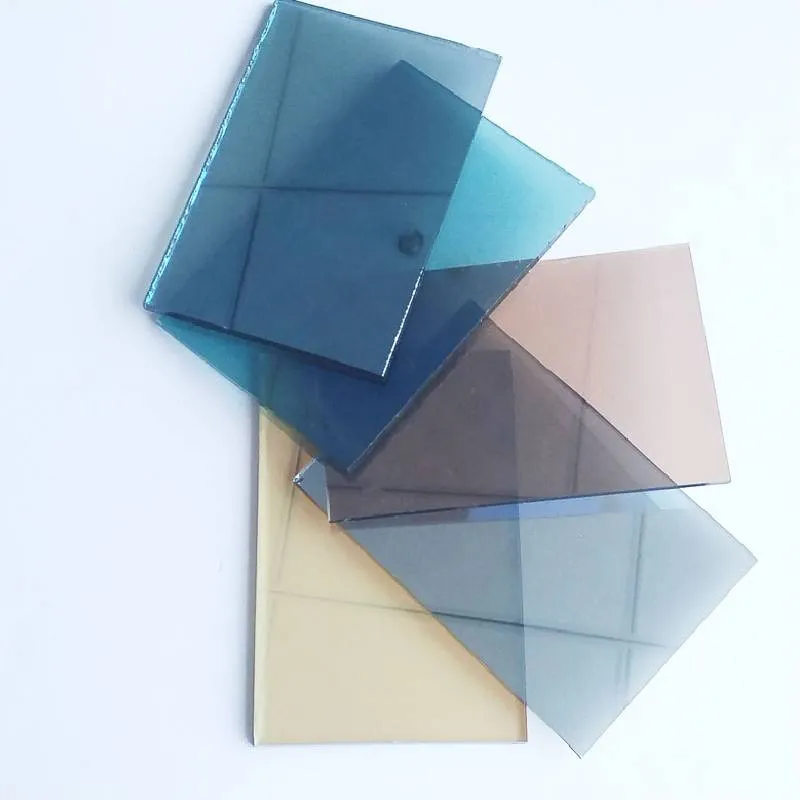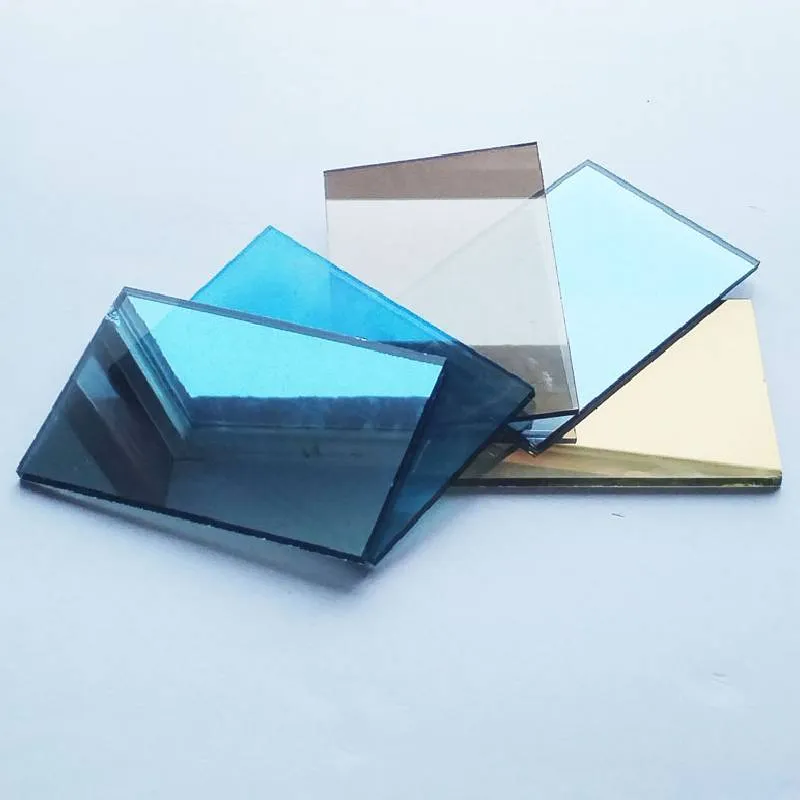Tinted and reflective glass has increasingly become a pivotal element in modern architecture and design, heralding a new era of both aesthetic and functional innovation. As a staple in construction and interior design, its multifaceted applications not only transform the visual experience but also enhance the sustainability and energy efficiency of buildings. This article will delve into the various aspects and benefits of tinted and reflective glass, making it a compelling choice for architects and builders worldwide.

Tinted glass, known for its ability to reduce glare and heat absorption, serves as an effective solution for energy conservation. Made by adding metal oxides during the glass manufacturing process, tinted glass can significantly reduce the sun's heat gain, promoting a cooler interior environment and decreasing reliance on air conditioning systems. This feature is particularly advantageous in urban settings and hot climates, where energy costs can be prohibitively high. Moreover, the reduction of UV radiation not only protects interior furnishings from fading but also safeguards the health of building occupants, making it a prudent choice for residential and commercial spaces.
Reflective glass, on the other hand, enhances privacy and aesthetic appeal by using a thin, metallic coating that reflects sunlight. This layer can dramatically transform a building's exterior appearance, giving it a sleek, modern look while providing practical benefits such as thermal insulation. Reflective glass is especially popular in commercial buildings, where energy efficiency and privacy are paramount. Its ability to mirror the surrounding environment allows buildings to blend seamlessly with natural landscapes, minimizing visual disruption and contributing to a more harmonious urban ecosystem.

The application of tinted and reflective glass in double-glazing systems further magnifies its benefits. Double-glazing comprises two layers of glass separated by a spacer and sealed to create an air or gas-filled cavity. When integrated with tinted or reflective coatings, these systems offer superior thermal performance, noise reduction, and enhanced security. The combination of these technologies addresses multiple building challenges simultaneously, offering a holistic solution that facilitates sustainability and comfort.
From an architectural perspective, tinted and reflective glass fosters innovation in building designs. The versatility of these materials allows for greater creativity in shapes and structures, pushing the boundaries of conventional architectural norms. The varying degrees of tint and reflectivity offer endless possibilities for customizing a building’s façade, ensuring that each structure can be tailored to meet specific aesthetic and functional requirements.
tinted and reflective glass
Despite their numerous advantages, the choice between tinted and reflective glass should be guided by specific project needs and local regulatory standards. For instance, while reflective glass can significantly reduce heat ingress and enhance privacy, it may not always be suitable for all geographic locations due to local building codes and potential environmental impacts. Architects and builders should therefore engage with specialized glass manufacturers and consultants to ensure compliance with all relevant guidelines, optimizing the benefits of these materials without compromising on safety or sustainability.
In recent years, advancements in glass technology have led to the development of smarter glass solutions, like electrochromic and photochromic variations.
These innovations allow for dynamic control of tint and reflection levels, adapting in real-time to environmental changes and user preferences. Such technologies represent the future of smart building design, where energy efficiency and user comfort are seamlessly integrated through intelligent glass applications.
For property developers, investing in tinted and reflective glass is not just a commitment to cutting-edge design but also a strategic move towards sustainable development. The initial cost outlay is often offset by long-term savings in energy consumption and maintenance, alongside added property value from enhanced aesthetic appeal. Furthermore, as regulatory pressure increases to adopt eco-friendly building practices, the role of tinted and reflective glass as a compliance tool cannot be underestimated.
In conclusion, tinted and reflective glass plays a crucial role in shaping the future of architectural design and sustainable development. Its unique combination of aesthetic flexibility, energy efficiency, and environmental benefits makes it an indispensable material for forward-thinking designers and builders. By prioritizing these advanced glass solutions, stakeholders across the construction industry can meet the challenges of modern-day building requirements, establishing a new standard for comfort, efficiency, and innovation.

